Do You Know the Difference Between Service Dogs, Emotional Support Dogs, and Working Dogs?

A US Army soldier with the 10th Special Forces Group and his military working dog jump off the ramp of a CH-47 Chinook helicopter from the 160th Special Operations Aviation Regiment during water training over the Gulf of Mexico as part of exercise Emerald Warrior 2011 on March 1, 2011. US Air Force photo by Tech. Sgt. Manuel J. Martinez.
The professional dog industry is complicated. Trained dogs range from seeing eye dogs for the visually impaired, dogs who can smell blood sugar levels, and even attack dogs who look like they’ll rip your throat out. There are also emotional support dogs that don’t have any formal training, but have certificates that allow the owner to have some of the same privileges as someone with a service dog.
Unfortunately, a segment of dog owners take advantage of laws that make discrimination against service dogs illegal, but there are others who literally can’t function without their four-legged sidekick — and then there’s everyone else in between.
Confused? You aren’t alone. Here’s what you need to know.
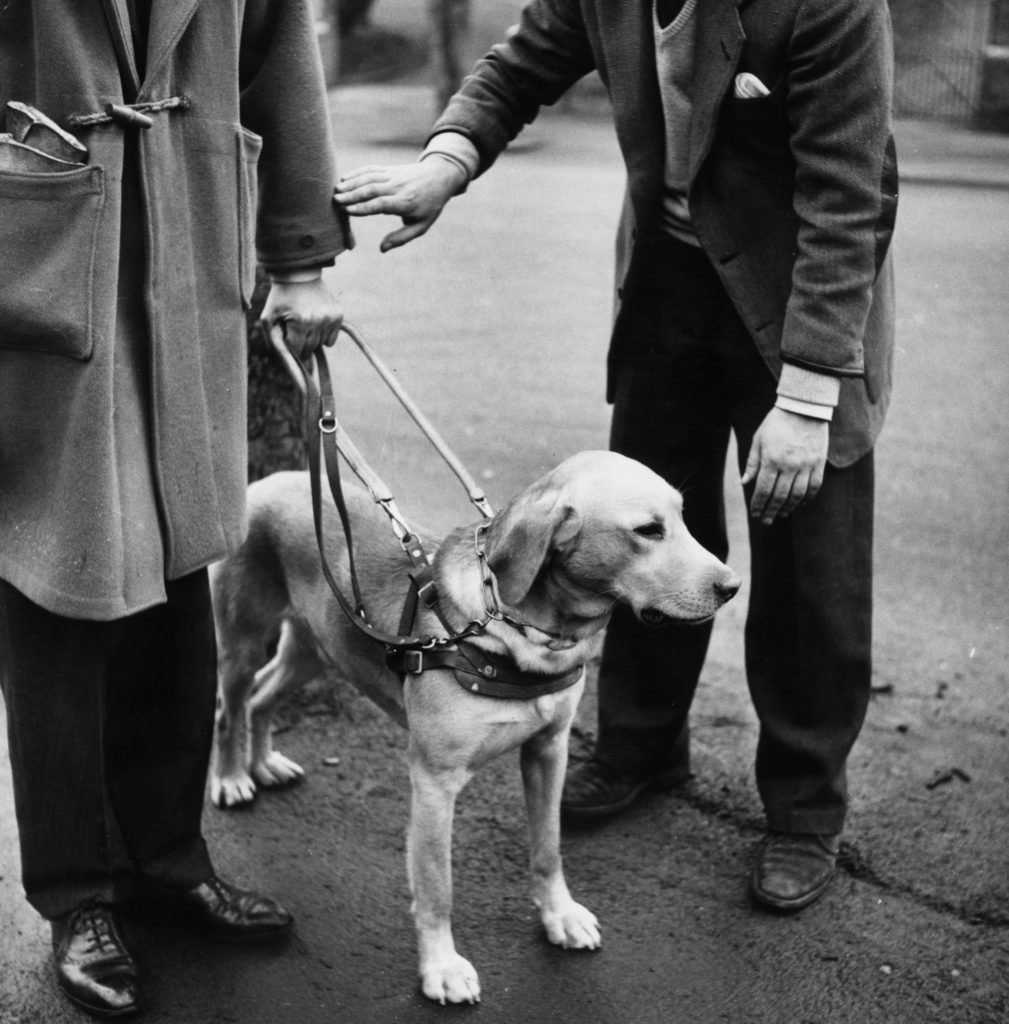
Service Animals
“Service animal” is a blanket term for a dog who has been specifically trained for a certain task (yes, a “service animal” must legally be a dog). A few of the jobs include:
- Seeing eye dogs. They serve as the eyes for those who are visually impaired.
- Hearing dogs. Trained specifically to aid the hearing impaired, they alert their owner to sounds pertaining to them, from doorbells to oncoming traffic.
- Diabetes alert dogs. These canines are able to detect hyper- or hypoglycemia (high or low blood sugar levels) and alert their owner to correct their blood sugar.
- Psychiatric service dogs. They assist people with specific mental disorders, and their job varies depending on the disorder. Severe obsessive-compulsive disorder (OCD), post-traumatic stress disorder (PTSD), or anxiety may each warrant different specialized training.
- Seizure response dogs. They are trained to assist someone during or after a seizure.
- Mobility assistance dogs. These dogs are trained to help with tasks a physically disabled person cannot perform.
- Allergy detection service dogs. These dogs, like many above, have literally saved lives.
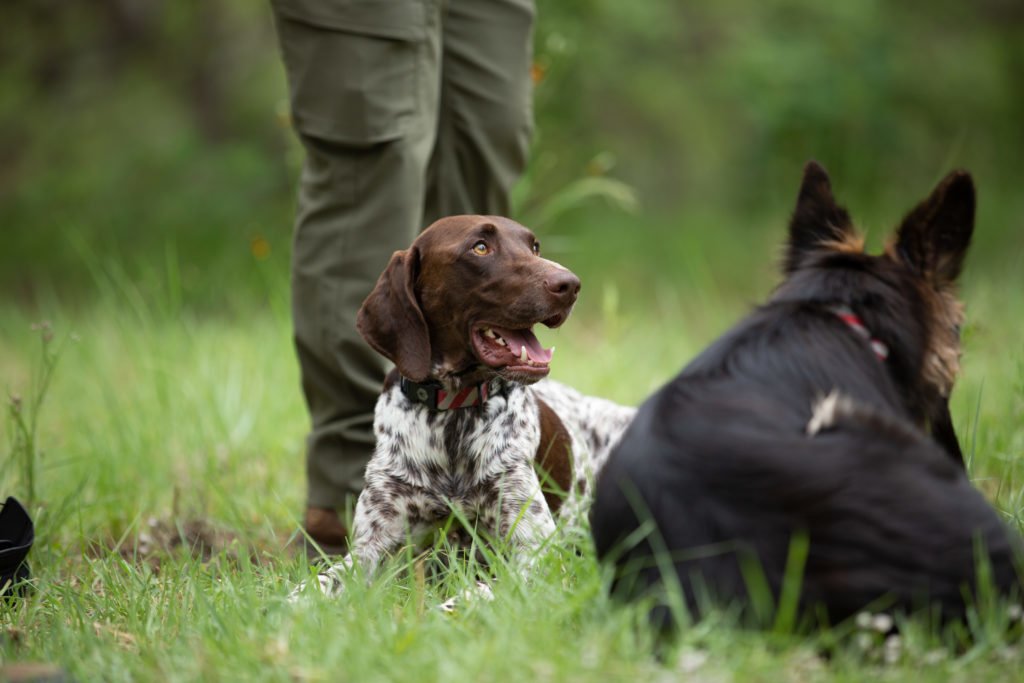
To make it simple, service animals have been formally trained for a specific profession. While that doesn’t diminish the value of an emotional support animal (ESA), it is important to distinguish between the two.
According to the Americans with Disabilities Act, “Dogs whose sole function is to provide comfort or emotional support do not qualify as service animals under the ADA.” Service animals, unlike other variations of dogs who support their humans, “are individually trained to do work or perform tasks for people with disabilities.”
Emotional Support Animal
An ESA can be any kind of animal — a dog, cat, mouse, or even a duck. In order to qualify for an emotional support animal, the owner is supposed to demonstrate a significant mental disorder or disability proving the need for an ESA. Still, they are not service animals and don’t have the same rights. While some business owners may allow ESAs on their property, they are under no obligation to do so (they are required to do so for service animals).
Though not considered service animals, ESAs do have some rights. While airlines have different regulations on what documentation must be provided, ESAs are legally allowed to travel in airplanes. They can also enter apartments, though they can be asked to leave if the dog is out of line.
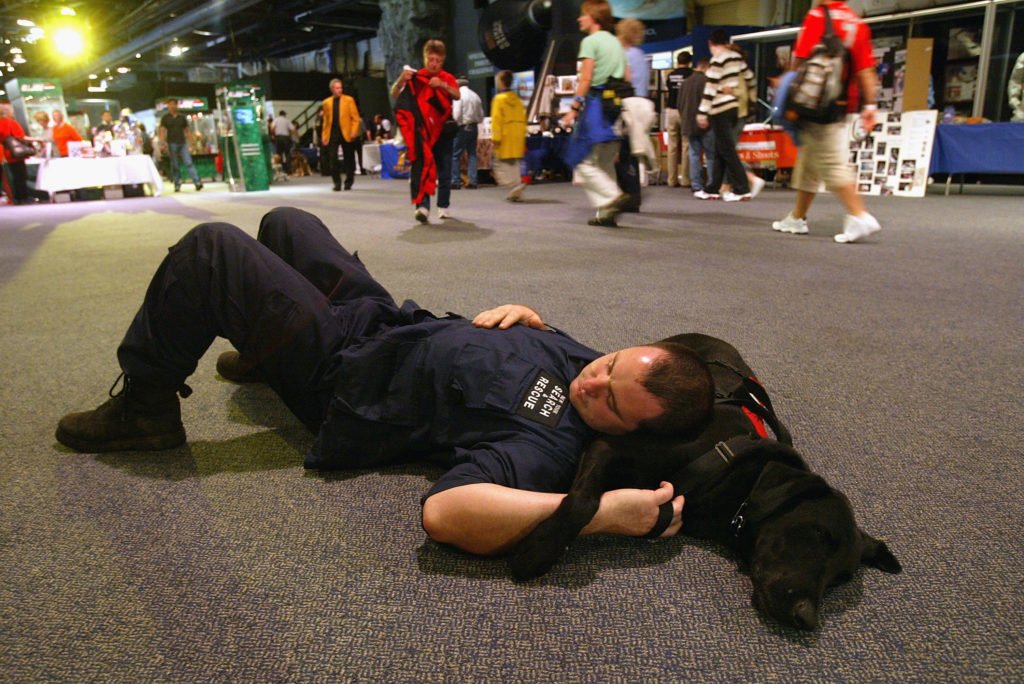
Pervasive issues among service animals and ESAs
The difficulty with ESAs is that the system of certification is often abused. Need to qualify for a lease on that house you really want, but the owners don’t allow pets? Get your dog an ESA certificate. Want to take your furry friend to the mall? Make him an ESA.
What’s the harm, after all?
An untrained dog (whether it’s an untrained ESA or a regular dog who has difficulty behaving in public) can be a distraction to a service animal. These working dogs are trained to ignore people who are offering it food, walking by, jumping, screaming, and many other obstacles — but some of the most difficult obstacles are misbehaving dogs in their vicinity.
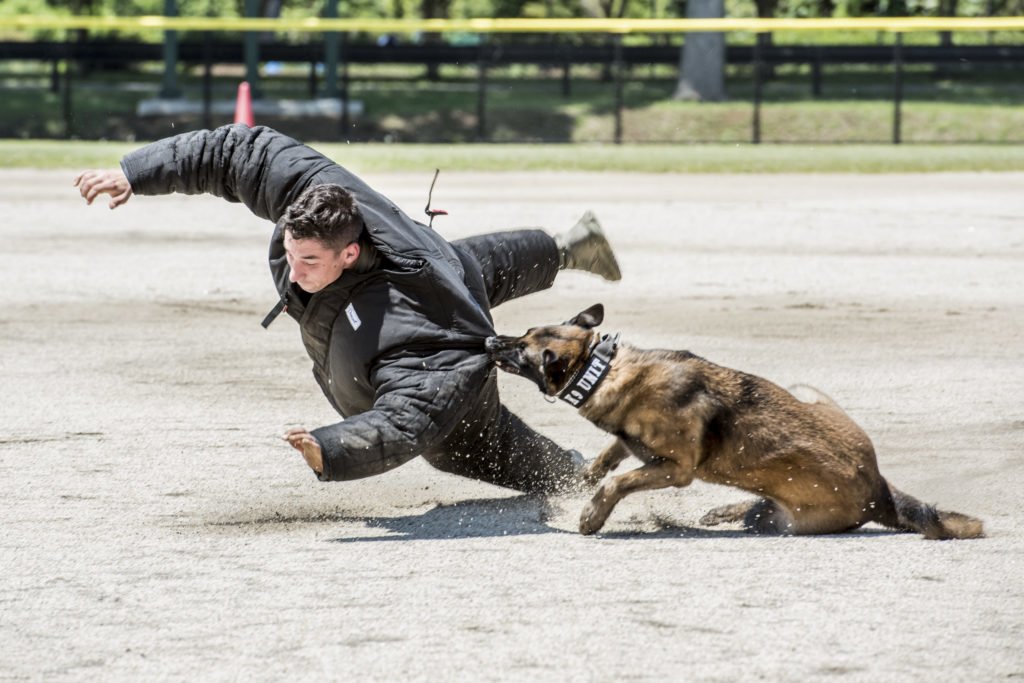
“If you’re out with your dog and you see a service animal, keep your distance, if possible,” said Kenna Milaski, who raises puppies that have gone on to be seeing eye dogs. “You don’t want to become a distraction to a working service dog. Treat their service dog like medical equipment — you wouldn’t ask to pet someone’s wheelchair or let your dog play with someone’s cane, so don’t do it with somebody’s service dog either.”
The biggest concern is one that people rarely consider for their own dogs, particularly ESAs. An untrained ESA or fake service dog will find itself in places where dogs aren’t typically allowed, and there’s a chance that they might attack people or real service animals. It might not be typical behavior for the dog, either. Something as simple as an ESA becoming excited at the sight of a service dog in a loud, unfamiliar place like an airport may cause it to spiral out of control.
When service animals are attacked, many of them develop something similar to PTSD. They may no longer be able to work, potentially suffering from issues and triggers for the rest of their lives. This is not only devastating for the dog, who has been trained to do a specific job that they can no longer perform, but it can also be devastating (and costly) for the handler. The two often develop a strong bond and depend on each other for physical and emotional support.
“Treat their service dog like medical equipment — you wouldn’t ask to pet someone’s wheelchair or let your dog play with someone’s cane … ”
These attacks often happen under the watch of owners who didn’t know their dog was capable of such aggression. However, any dog who hasn’t been extensively trained can feel the need to defend itself, even in innocuous situations. This is why thorough, professional training is so important for service animals.
A longer-term damaging factor is that an untrained animal who misbehaves in public risks negatively affecting the public’s perception of all working animals. Bad behavior doesn’t necessarily mean aggressive behavior — it could be excessive pulling or barking.
“A lot of people are not aware of the damage their fake ESA or fake service dog is doing to the whole industry,” Milaski said. “If you don’t need one, then don’t get one — ask any professional on the matter, they’ll tell you the same. However, if you do need one, then by all means get one. People with all sorts of disabilities have had their quality of life vastly improved when they got a service animal.”
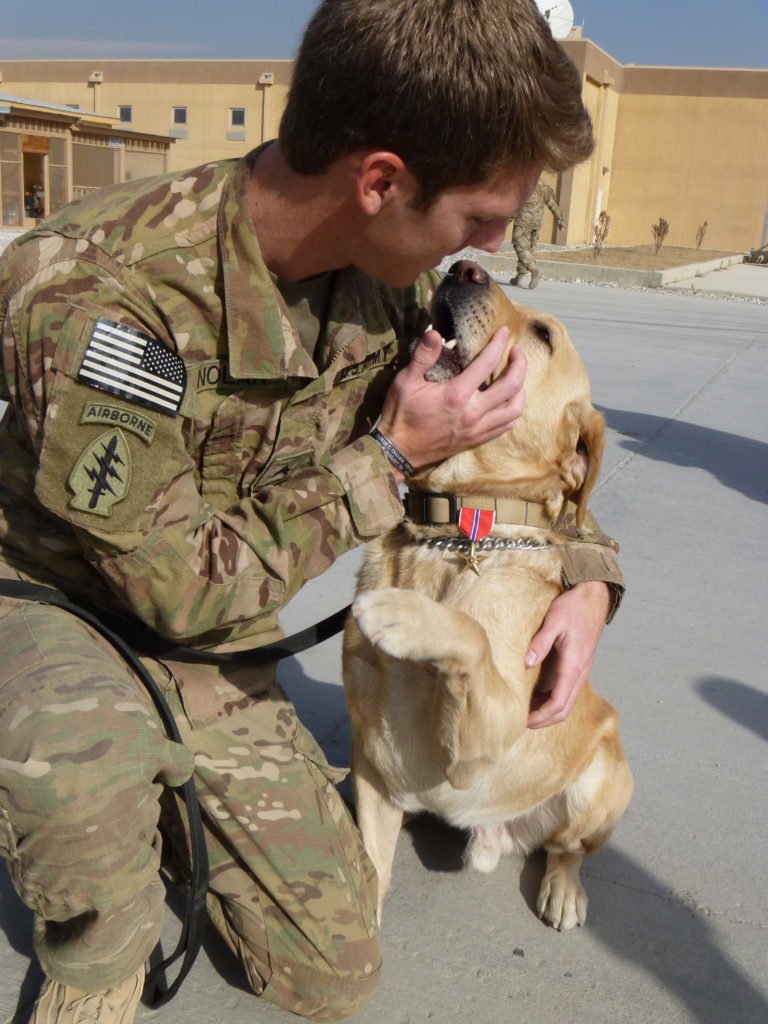
Working Dogs
Technically speaking, a working dog would cover a service animal, but for the purposes of this article, we will relegate them to dogs with jobs outside of tending to people with disabilities. Many dogs work for the police or the military; other dogs herd sheep or assist hunters.
In the military or law enforcement, dogs receive extensive training — often in tracking, sniffing explosives or drugs, or biting. They can even track someone hiding from the authorities or take down an assailant on the run.
If you have a bite dog on your tail, you don’t need to read an article to know what his job is — he’ll let you know.
Levels of training and control
While service animals are generally well-trained, they are not perfect, and their training must be maintained. If a person with a disability loses control of their dog, they can be asked to remove that dog from the premises. Again, it doesn’t have to be aggressive behavior — it could mean relieving themselves in an inappropriate location or constantly yanking on their leash. These dogs are supposed to be professionals, and they are held to a professional standard.
They also must be under a leash or tether of some kind, unless it specifically hinders them from doing their job (e.g., if the handler goes into diabetic shock and the dog must seek help). Unnecessarily unleashing them is also grounds for an employee of a business (restaurant, grounded airline, or department store) to ask them to leave. However, the disabled person must be offered the opportunity to return without the animal.
Note: States have different rules across the board — find out what is and isn’t legal in your state.
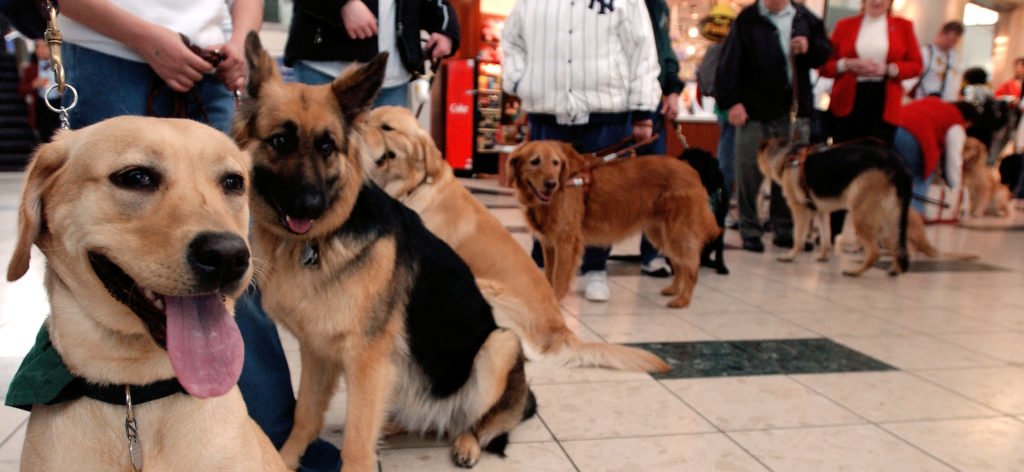
How to treat any of these animals
Whether it’s a service animal or an ESA, if you see a working animal, leave it alone. Do not wave, do not offer it food, do not interact with the animal — and don’t ask if you can. Many professional trainers stress avoiding eye contact with service animals, something that many people don’t realize is a distraction.
This applies if it’s a cute puppy in training, if the dog does not appear to be working, or if the person with the animal does not appear to be disabled. These animals have a job to do, and any distraction could have a significant impact on the owner’s health and safety.
Working dogs get plenty of love and care when they’re off the clock. While it may be difficult for a dog lover to ignore (i.e., not distract) these dogs, it is important for their own sake. Overwhelming an animal with attention while they’re supposed to be working can be confusing for them, dangerous for the owner, and instill a negative public perception of service animals.

Luke Ryan is the author of two books of war poetry: The Gun and the Scythe and A Moment of Violence. Luke grew up overseas in Pakistan and Thailand, the son of aid workers. Later, he served as an Army Ranger and conducted four deployments to Afghanistan, leaving as a team leader. He has published over 600 written works on a variety of platforms, including the New York Times.
BRCC and Bad Moon Print Press team up for an exclusive, limited-edition T-shirt design!
BRCC partners with Team Room Design for an exclusive T-shirt release!
Thirty Seconds Out has partnered with BRCC for an exclusive shirt design invoking the God of Winter.
Lucas O'Hara of Grizzly Forge has teamed up with BRCC for a badass, exclusive Shirt Club T-shirt design featuring his most popular knife and tiomahawk.
Coffee or Die sits down with one of the graphic designers behind Black Rifle Coffee's signature look and vibe.
Biden will award the Medal of Honor to a Vietnam War Army helicopter pilot who risked his life to save a reconnaissance team from almost certain death.
Ever wonder how much Jack Mandaville would f*ck sh*t up if he went back in time? The American Revolution didn't even see him coming.
A nearly 200-year-old West Point time capsule that at first appeared to yield little more than dust contains hidden treasure, the US Military Academy said.












